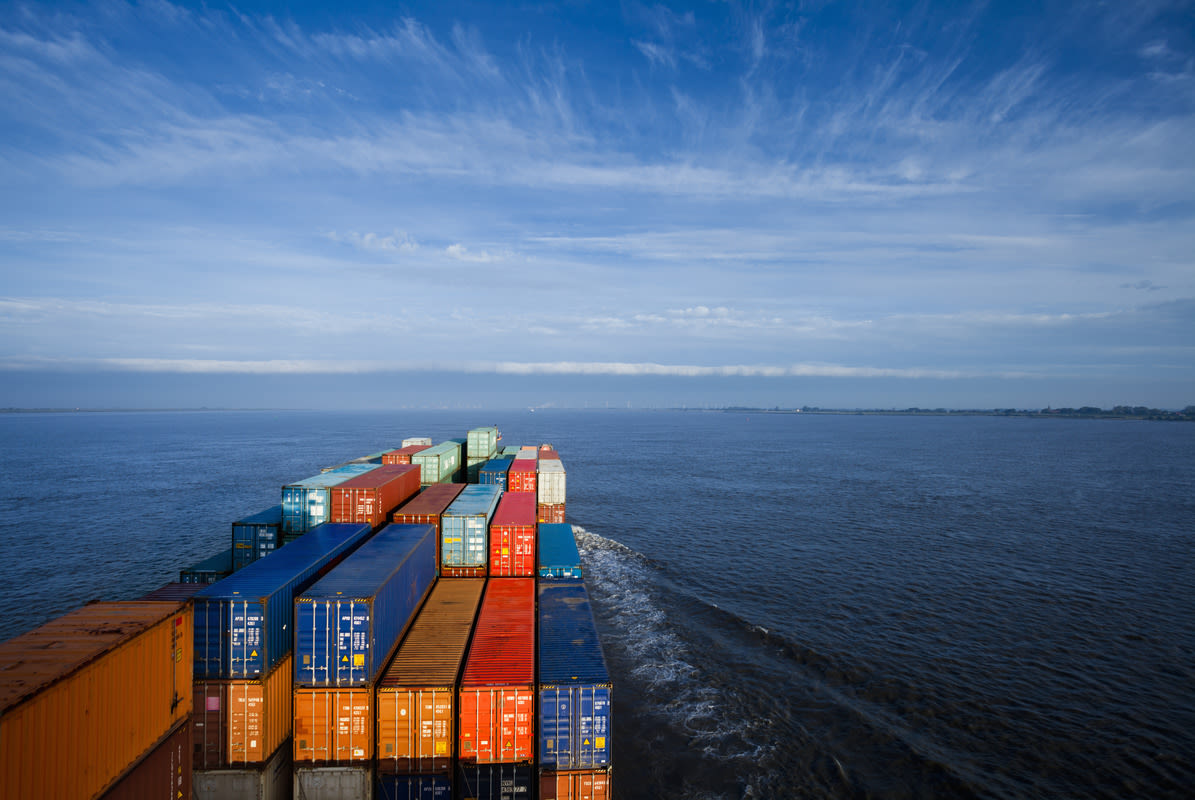
December 30, 2024
2025 Air Freight Market Outlook: Disruptions, Trends, and How to Prepare
Tags:

December 30, 2024
In our recent Air Market Predictions for 2025 webinar, approximately 75% of attendees indicated that they were likely to use air freight more frequently to avoid ocean disruptions in the first half of 2025—a sentiment that captures many lingering uncertainties in global trade, such as another potential ILA strike, going into the new year.
While the ocean freight market foresees potential disruptions, the air freight market is also uncertain by an unprecedented level of activity and disruption brought by the looming de minimis tax exemption change—which may target the regulation that allows products valued under $800 to enter the U.S. duty- and tax-free.
Thomas Kempf, Flexport’s Senior Director of Global Air Freight, joined Adriaan den Heijer, Executive Vice President of Cargo at Air France-KLM, and Niall van de Wouw, Chief Airfreight Officer at Xeneta, to decode the outlook for the air freight industry in 2025 and beyond.
Watch our webinar on demand here: Air Market Predictions for 2025
Trend #1: Air freight has reached its peak.
“The Red Sea situation and potential strikes are a boon for air freight, and we expect that to continue. However, we think the Red Sea situation has plateaued, and the premium or the boost that it has given to air freight has reached its peak,” said van de Wouw.
Ocean freight is typically used for shipping large volumes due to its cost efficiency, but when reliability—timeliness and service consistency—declines, van de Wouw said that shippers often turn to air freight as an alternative. Such pivots drive up air freight volumes and rates.
Trend #2: Demand will continue to outpace supply.
Air cargo capacity is projected to grow by a maximum of 4% to 5%, while demand is expected to rise by 6% to 10%, depending on the trade lane, according to Kempf.
Key regions to watch include China, the Indian subcontinent, the Middle East, and Vietnam, particularly in relation to EU markets. Some European carriers, like Lufthansa, Virgin, British Airways, and LOT Polish Airlines, have either cut back or completely suspended their China routes, due to the ongoing Russia-Ukraine conflict, as they can no longer fly over Russian airspace. The detoured route over the Arctic means adding approximately two hours of flight time, increasing fuel costs and reducing efficiency. Meanwhile, Chinese carriers, which are able to fly over Russian airspace, are capitalizing on this disadvantage and gaining a competitive edge.
“I think most European carriers will shift belly capacity away from China,” said den Heijer. This shift will further benefit Chinese airlines going into 2025, when they can offer more competitive space and rates on Europe-to-Asia routes.
Additionally, Kempf noted that capacity imbalances could be intensified by the retirement of older freighters, delays in new freighter deliveries, and airlines focusing on passenger routes (which offer limited belly cargo space). As a result, pricing pressure is expected to persist in 2025 for European carriers, as capacity remains close to flat.
Trend #3: Airlines are adapting to shifting consumer demands.
In 2023, more than 4,000 completely new routes were introduced globally, accounting for 6.3% of total routes. 81% of these new routes (around 3,400) were designated for regional travel, reflecting a focus on domestic and regional connectivity.
“The mix of business and leisure travel has changed significantly. Corporate travel all over the world has gone down since COVID-19 due to numerous reasons, but leisure travel, especially the high-yielding leisure travel, has gained momentum,” said van de Wouw.
This shift is creating a structurally different network mix for passenger airlines and passenger-cargo airlines compared to pre-COVID times, and will be here to stay, he added.
Trend #4: Air-centric models are moving toward a combination of direct fulfillment and forward stock.
Ecommerce remains a major driver of air freight demand, particularly in Asia-Pacific markets, which will account for 80% of the projected $36 trillion global B2B ecommerce market by 2026, and is expected to grow by 20-25% in 2025 alone, according to Kempf. Additionally, consumer preferences for niche brands promoted through social media platforms like TikTok are reshaping demand patterns, driving growth potential in under-penetrated markets like Southeast Asia and Latin America.
However, with new potential de minimis regulations, we anticipate an accelerated shift from air-centric models (90% air freight) to a 60%-40% blend of direct fulfillment (shipping an order directly to the consumer) and forward stock (a distribution practice whereby products are stored close to the customer in preparation for the “last mile” leg of their journey) for major ecommerce players between 2025 and 2027, he explained.
The potential de minimis rule change is also likely to result in a 20% cost increase on a SKU-level basis, he continued, stressing that big ecommerce players are more likely to absorb the increase in costs, while smaller businesses will face more challenges.
In light of these shifts, one critical question has emerged: How should businesses prepare?
Kempf shared the following four strategies:
Prioritize supply chain agility and diversification: Ensure your supply chain is flexible enough to respond quickly when needed—by relocating parts of your supply chain to regions that align better with your business needs, for example. The faster you can adapt, the more resilient your operations will be.
Optimize inventory management: Businesses that excel at adjusting inventory strategies—whether through stockpiling or just-in-time logistics—tend to stay ahead of the curve. Prioritize inventory models that align with your demand patterns and market conditions.
Leverage free trade zones: Free trade zones can offer significant advantages in complex trade environments. Businesses should explore these zones to reduce costs and improve operational efficiency.
Maximize duty drawback: In the U.S., duty drawback programs allow businesses to reclaim tariffs on goods that are re-exported. Taking full advantage of these programs can help mitigate tariff-related costs and improve overall profitability.
Contact Flexport to learn more about how you can better prepare for these emerging trends in the air freight market in 2025.
About the Author

December 30, 2024




